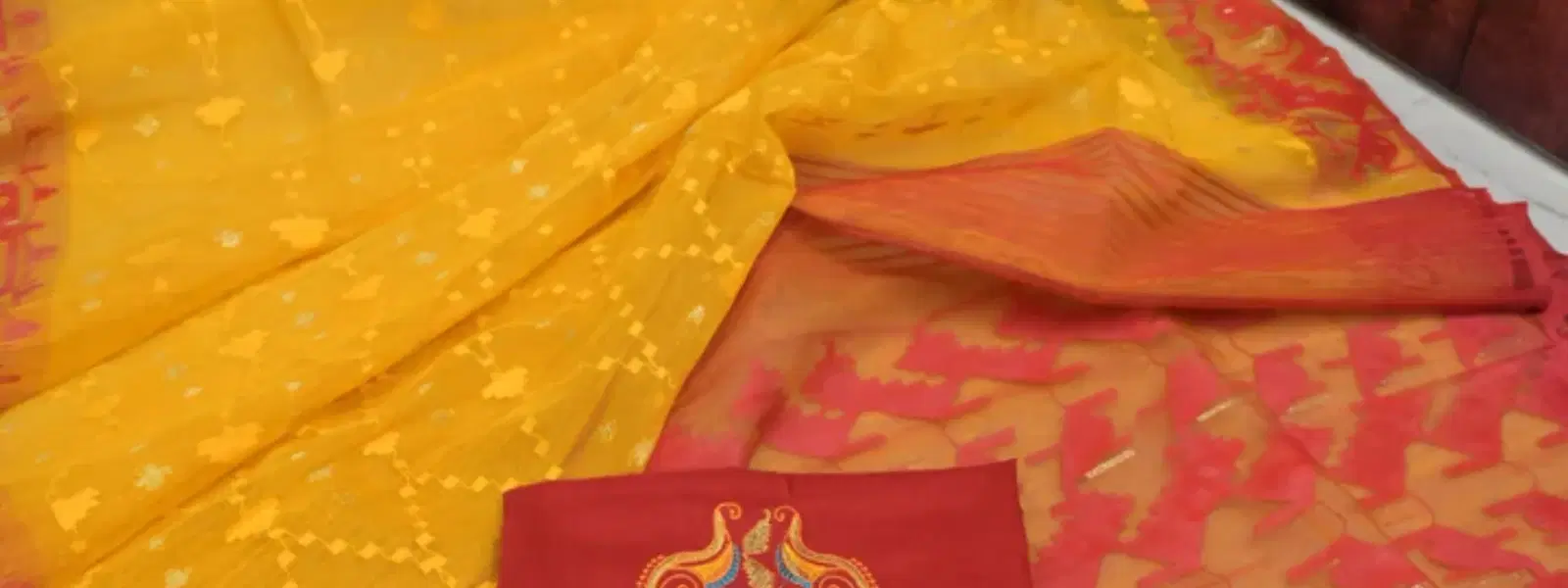
Apparel & Accessories
•03 min read
-b4b0ee01-7102-4782-b4cc-72450eaeb58c.png&w=3840&q=75)
Paithani sarees are more than just garments; they tell a story of rich heritage and timeless craftsmanship. In this guide, you will explore what is Paithani saree, dive into its origins, discover the weaving techniques, and learn how to identify authentic pieces. Whether you are a traditional Maharashtrian saree lover or new to the world of handwoven silk sarees, this post is your gateway to understanding the elegance of these luxury Indian sarees.
Paithani saree origin lies in Paithan, a town in Maharashtra known for its rich history. These sarees have adorned the royal courts of the Satavahana dynasty, symbolizing status and luxury. Today, this traditional Maharashtrian saree continues to be celebrated for its intricate designs and cultural prestige.
Worn during weddings and vibrant festivals, Paithani sarees are an integral part of Maharashtrian celebrations. They also play a key role in preserving the art of handloom weaving, offering a glimpse into India's artisanal legacy.
The journey of a Paithani saree begins on handlooms. Skilled artisans use pure, handwoven silk combined with gold zari threads, resulting in a fabric that is as luxurious as it is delicate. Each step of the paithani saree weaving process requires time, patience, and precision, ensuring that every piece is unique and a true work of art.
One of the hallmarks of paithani saree designs is their unique motifs. Traditional elements such as peacocks, lotuses, and parrots are carefully woven into the fabric. A distinctive feature is the pallu, the decorative end that contrasts yet complements the border, adding an element of surprise in every drape.
Insight Corner: The Art of Timeless Elegance
Did you know that traditional Paithani sarees are crafted on handlooms without the use of power looms? Each saree can take weeks or even months to complete, making it a true testament to the artisan’s dedication and skill.
-961388ae-2e6f-4656-ab76-3780ab6a42c4.png&w=3840&q=75)
There are several types of paithani sarees, each distinguished by its weaving patterns and motifs. For instance, variations like Yeola Paithani and Bangadi Mor are celebrated for their unique styles and craftsmanship.
Traditional color choices for these sarees include hues of gold, green, and red. These colors are not only visually striking but also hold cultural significance. Modern adaptations have introduced new and vibrant color schemes while maintaining the essence of authentic paithani silk.
Learning how to identify paithani saree details is essential for any enthusiast. Authentic pieces feature reversible borders, intricate handwoven patterns, and show no loose threads on the fabric. These markers ensure you are investing in true craftsmanship.
While both are coveted as luxury Indian sarees, paithani sarees are celebrated for their simplicity and refined motifs. In contrast, Banarasi vs paithani saree comparisons reveal differences in weaving techniques and decorative emphasis, with Paithani maintaining a unique blend of tradition and elegance.
The cost of a Paithani saree is a direct reflection of the meticulous work involved. The use of premium materials, the detailed handwoven silk saree process, and the labor-intensive methods all add to their value. These sarees are treasured heirloom pieces passed down through generations.
-68be3552-55c1-4572-9cbe-6f32de66a775.png&w=3840&q=75)
Paithani sarees stand as a testament to sustainable and ethical fashion. Their appeal lies not only in their luxurious appearance but also in their rich history and timeless artistry. Today, they continue to attract brides and saree enthusiasts who appreciate authentic paithani silk and its cultural impact.
Paithani sarees are treasured for their intricate handwoven designs, luxurious silk fabric, and delicate gold zari work that create a symbol of heritage and elegance.
While a saree is a general term for traditional Indian drapes, the Paithani saree is a specific handwoven silk saree from Maharashtra, distinguished by its unique motifs and craftsmanship.
The expense is attributed to the labor-intensive weaving process, high-quality materials like pure silk and gold zari, and the skill required to create each masterpiece.
Look for reversible borders, intricate patterns, and well-finished edges with no loose threads, all indicators of genuine paithani saree artistry.
There are several types, including Yeola Paithani, Bangadi Mor, and Asavali, each with unique designs and traditional color palettes.
Paithani sarees unite tradition, luxury, and a rich cultural narrative in every weave. They celebrate India's heritage and craftsmanship, making them more than a garment—they are an experience of art and legacy. By understanding their historical significance and the skilled process behind each piece, you can truly appreciate the grace and enduring appeal of these timeless masterpieces.